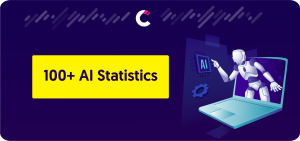
(Updated) 100+ AI Statistics from Top Sources – 2024
The growing demand for AI is obvious in all markets. This page collects and will keep collecting the best AI statistics that we find across

The growing demand for AI is obvious in all markets. This page collects and will keep collecting the best AI statistics that we find across
With numerous products and ever-fluctuating market conditions, harnessing the best price monitoring software becomes critical to business success. Whether you’re battling razor-thin margins in e-commerce
Monitor competitor website changes
You can get alerted when your competitors are making changes to their website.
Find competitor keywords
Finding your competitors’ keywords is essential for your business. It means that you focus your entire website on targeting high volume, quality keywords.
Track Social Media Pages
Social media competitive analysis is the constant monitoring and analyzing the moves of your competition on social media.
Competitor Email Monitoring
Tracking your competitors’ emails takes some time, but it’s well worth it!
How to do competitor analysis
One important step is to conduct an effective competitive analysis to evaluate your competitors’ brands.
Competitors App SRL
support at competitors.app
Sanzienelor 3, Sibiu, Romania
+1 (302) 208-7954